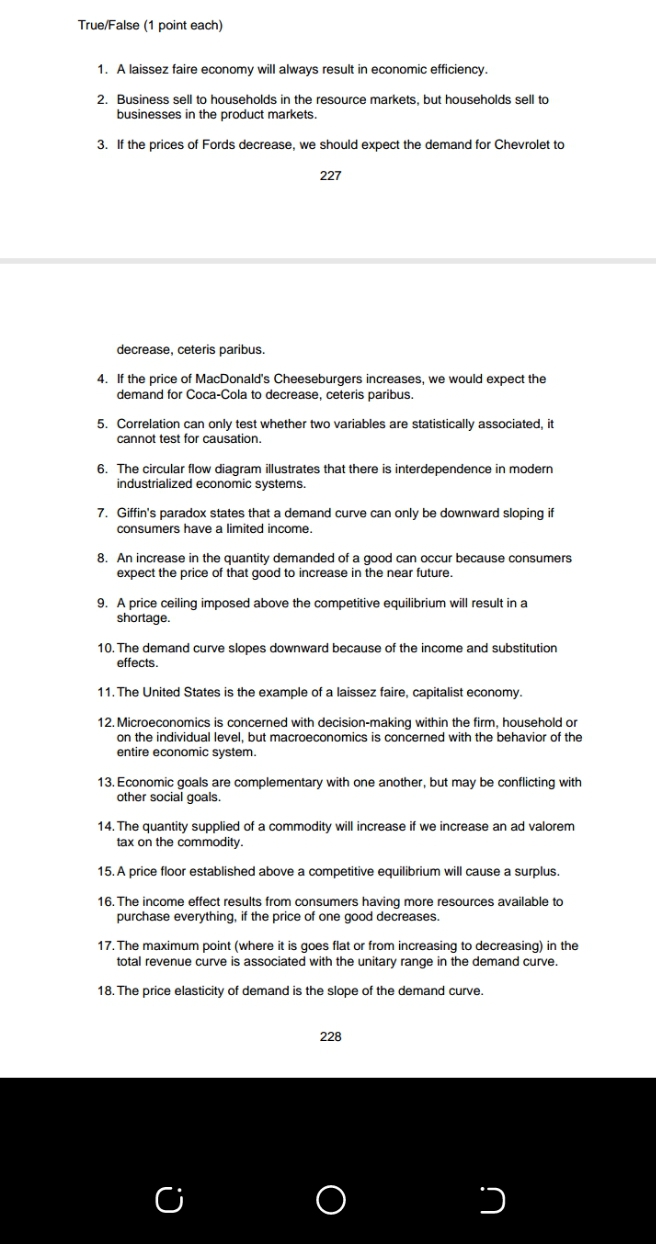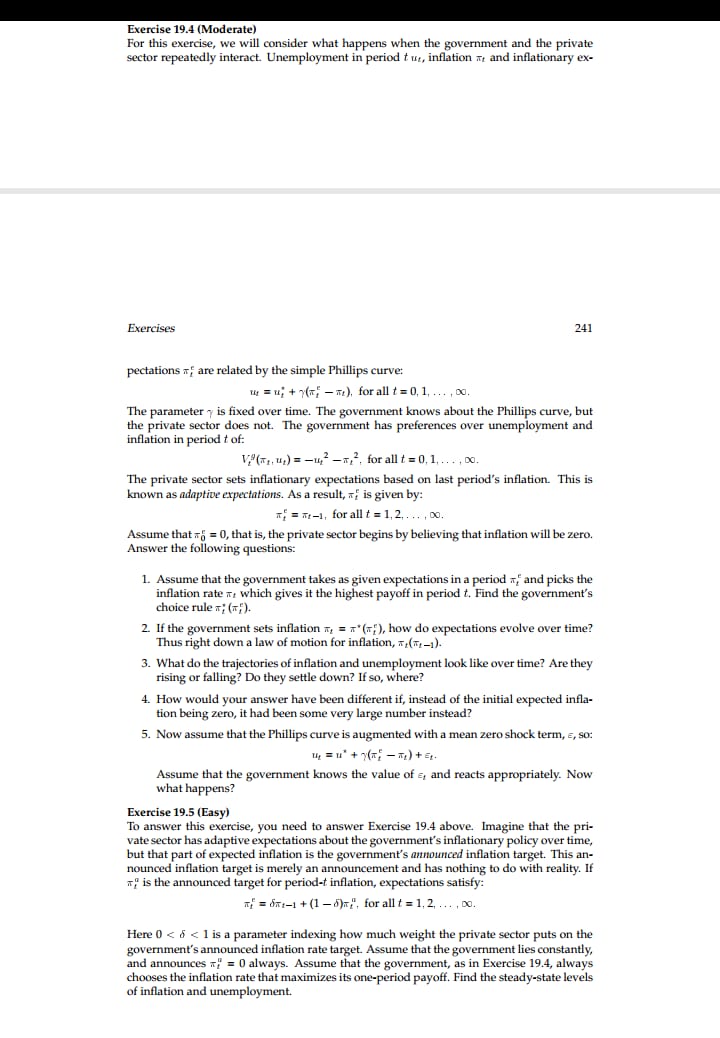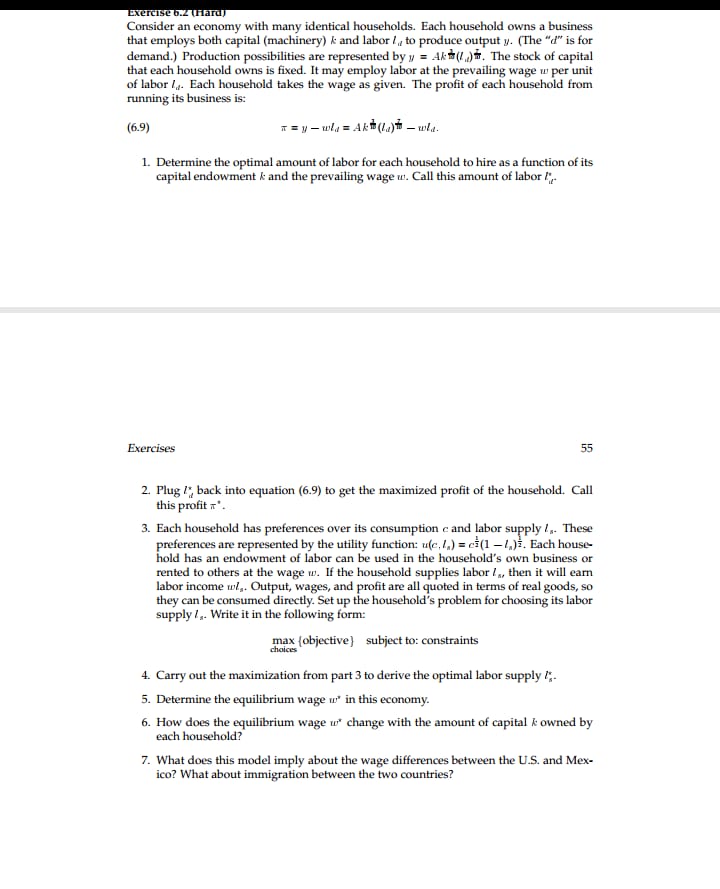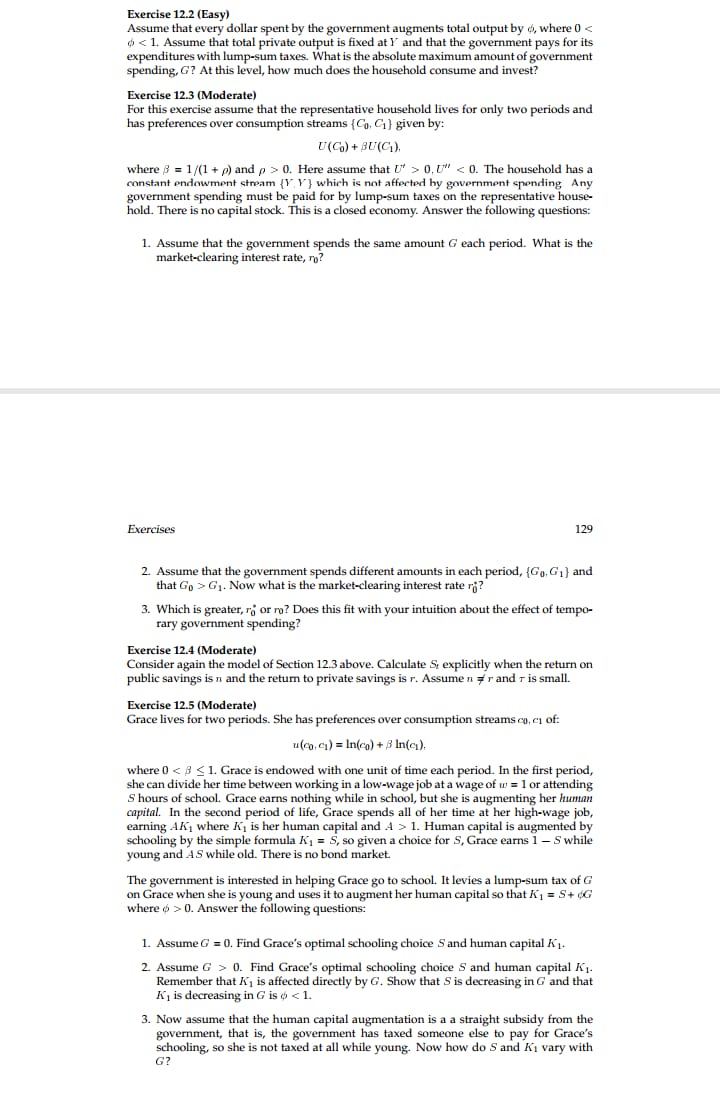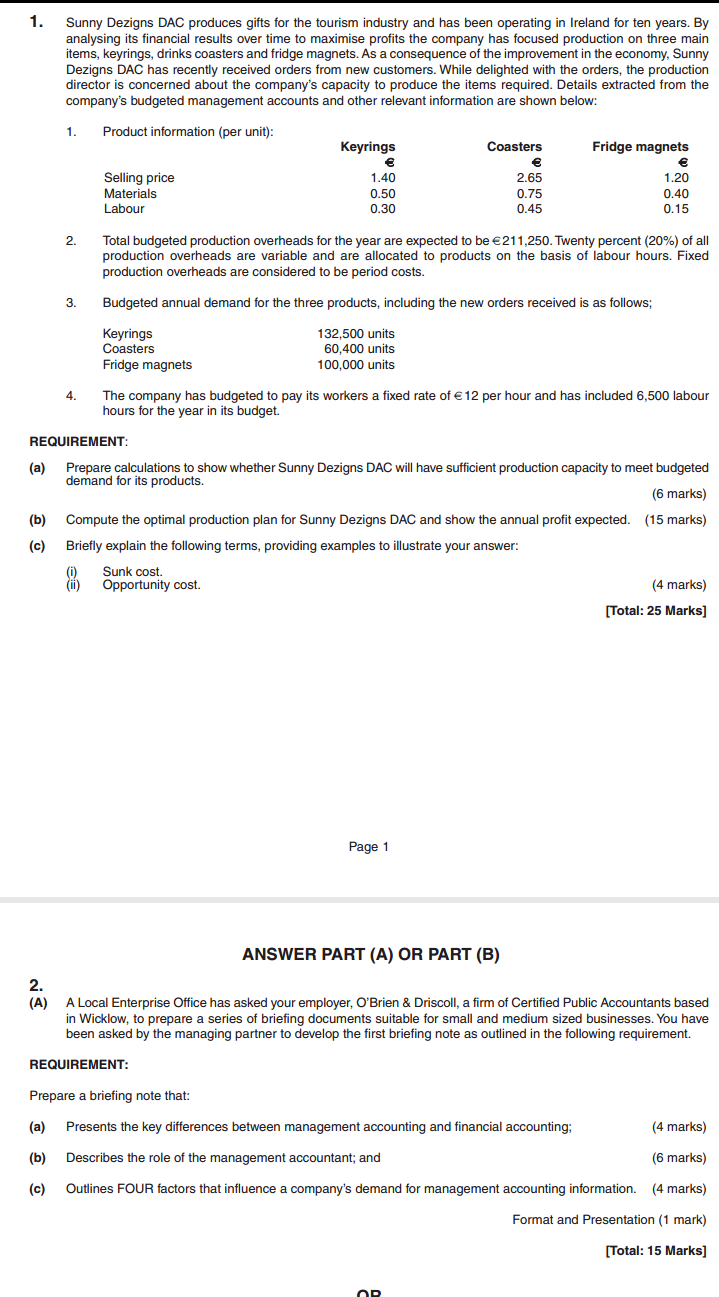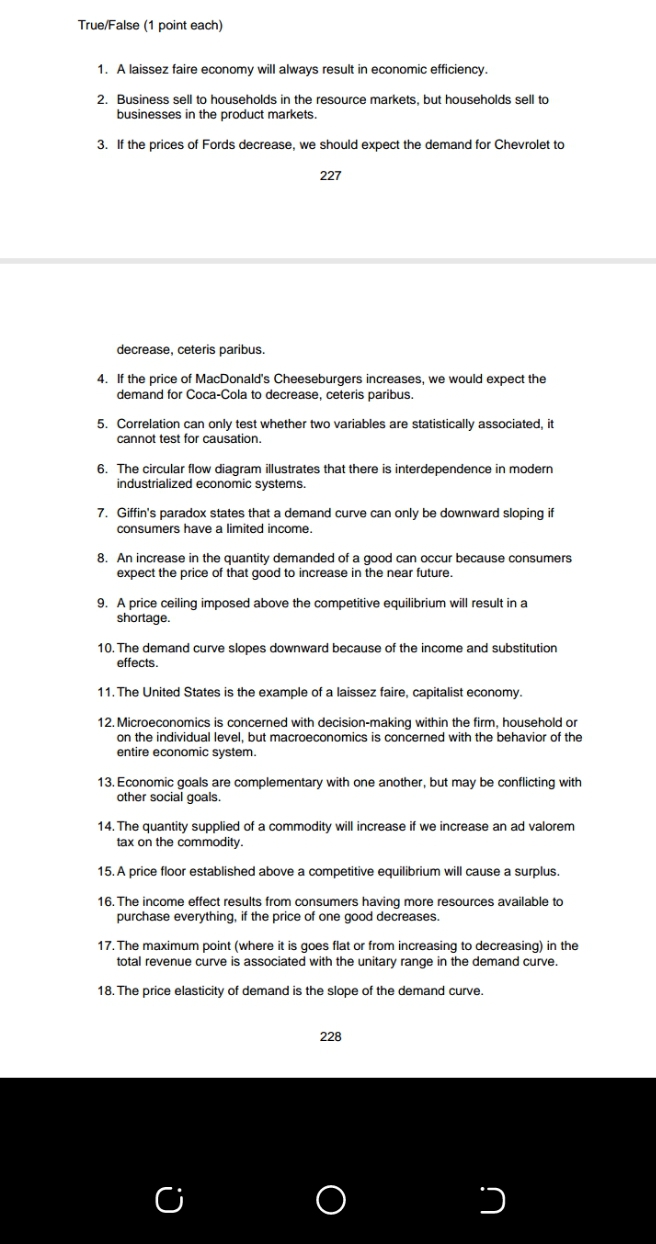
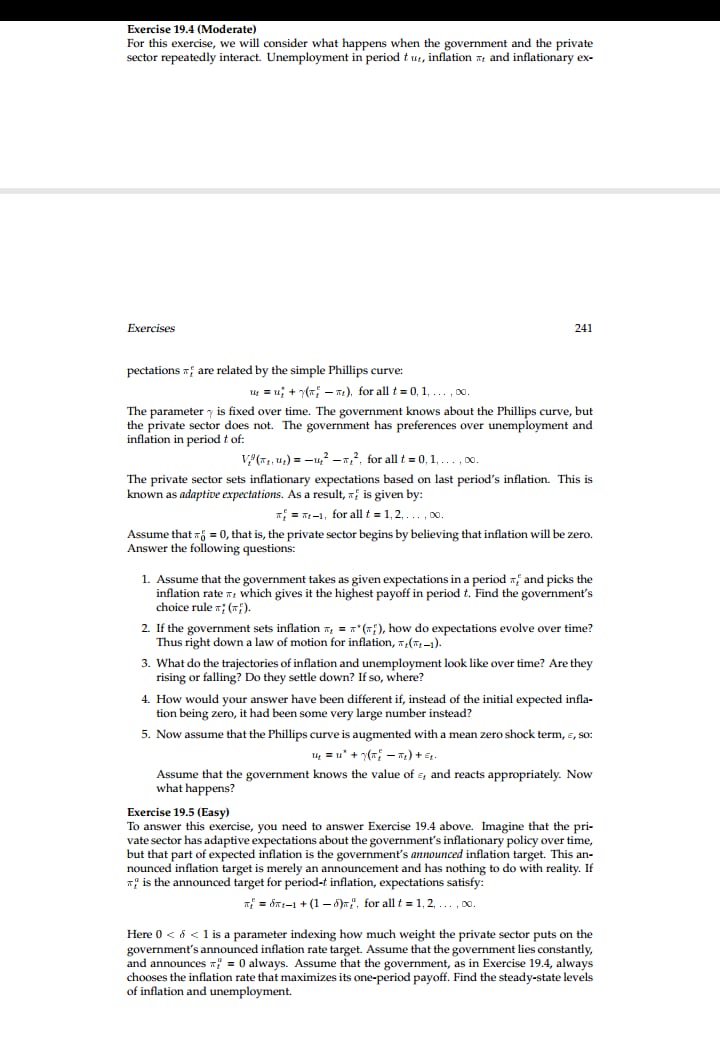
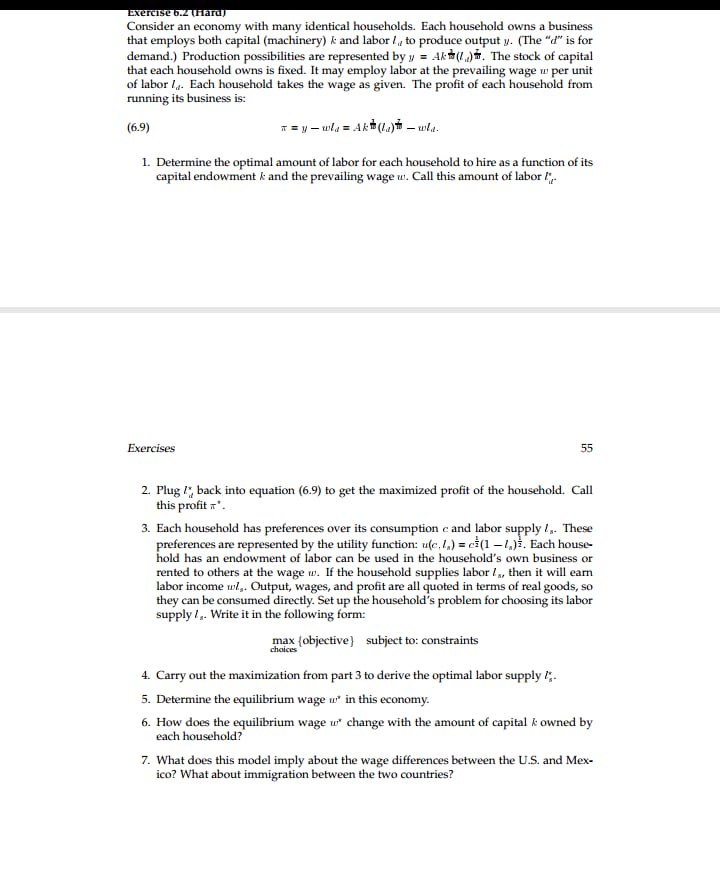
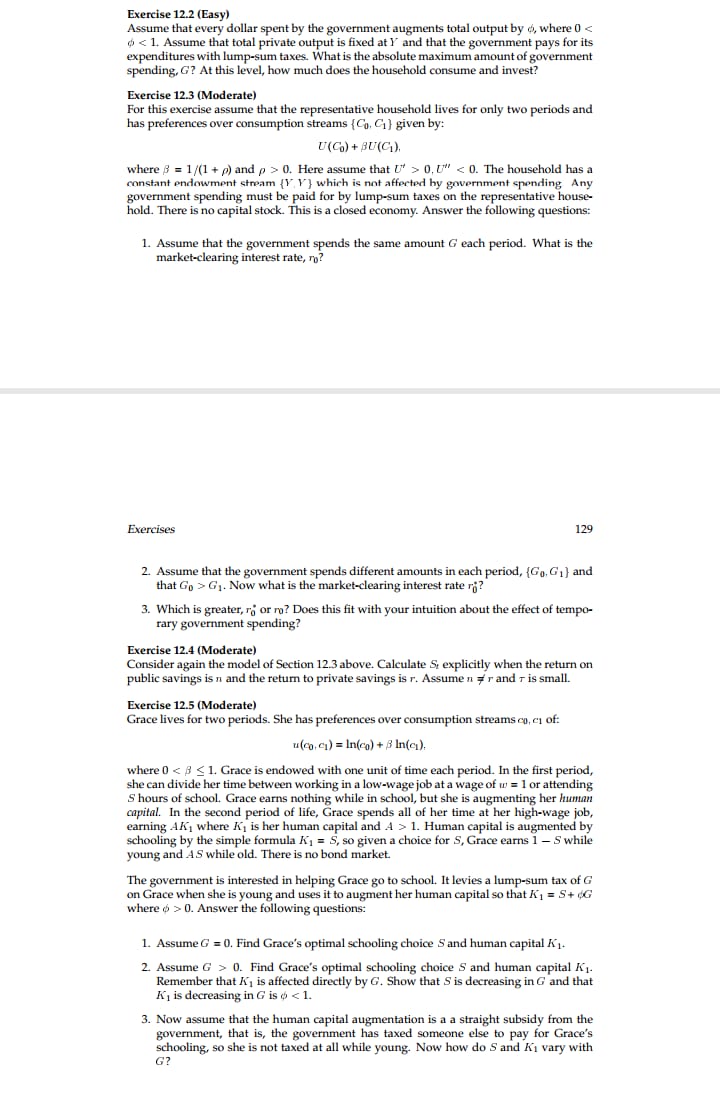
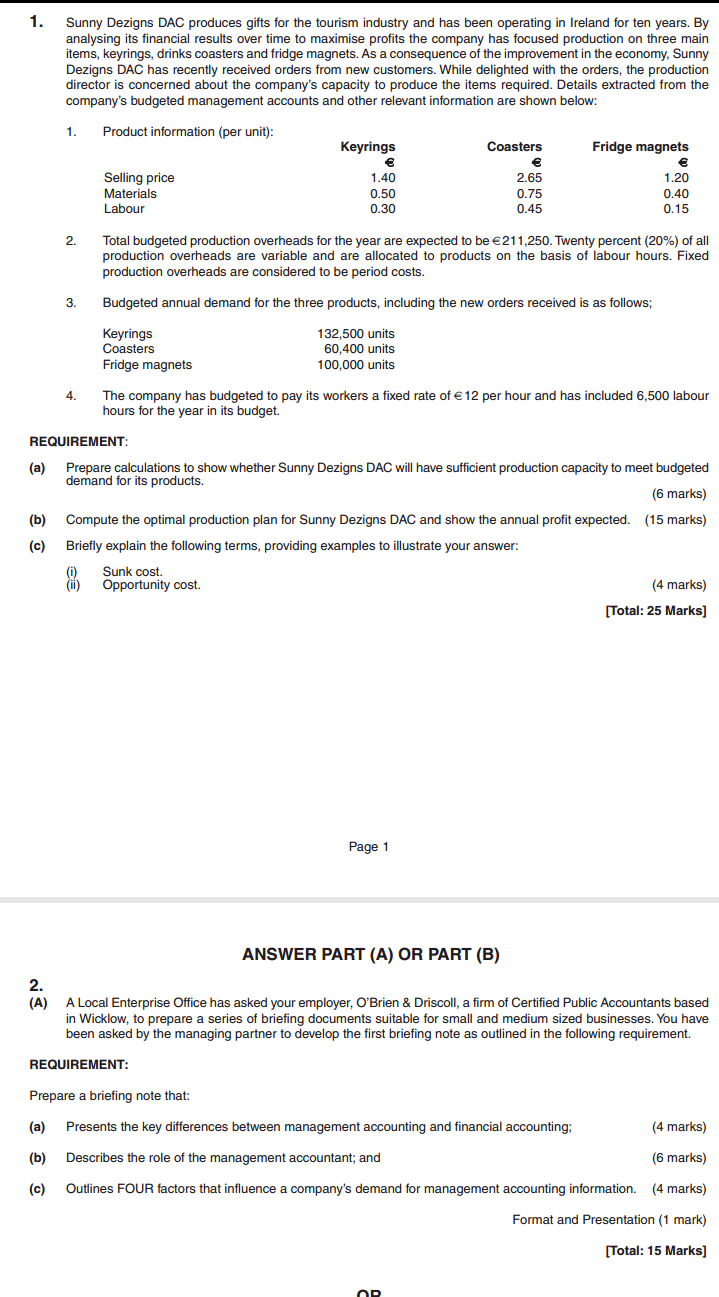
Each question well explained for my understanding. Correct answers only.
True/False (1 point each) 1. A laissez faire economy will always result in economic efficiency. 2. Business sell to households in the resource markets, but households sell to businesses in the product markets. 3. If the prices of Fords decrease, we should expect the demand for Chevrolet to 227 decrease, ceteris paribus. 4. If the price of MacDonald's Cheeseburgers increases, we would expect the demand for Coca-cola to decrease, ceteris paribus. 5. Correlation can only test whether two variables are statistically associated, it cannot test for causation. 6. The circular flow diagram illustrates that there is interdependence in modern industrialized economic systems. 7. Giffin's paradox states that a demand curve can only be downward sloping if consumers have a limited income. 8. An increase in the quantity demanded of a good can occur because consumers expect the price of that good to increase in the near future. 9. A price ceiling imposed above the competitive equilibrium will result in a shortage. 10. The demand curve slopes downward because of the income and substitution effects. 11. The United States is the example of a laissez faire, capitalist economy. 12. Microeconomics is concerned with decision-making within the firm, household or on the individual level, but macroeconomics is concerned with the behavior of the entire economic system. 13. Economic goals are complementary with one another, but may be conflicting with other social goals. 14. The quantity supplied of a commodity will increase if we increase an ad valorem tax on the commodity. 15. A price floor established above a competitive equilibrium will cause a surplus. 16. The income effect results from consumers having more resources available to purchase everything, if the price of one good decreases. 17. The maximum point (where it is goes flat or from increasing to decreasing) in the total revenue curve is associated with the unitary range in the demand curve. 18. The price elasticity of demand is the slope of the demand curve. 228 O C.Exercise 19.4 (Moderate) For this exercise, we will consider what happens when the government and the private sector repeatedly interact. Unemployment in period tut, inflation at and inflationary ex- Exercises 241 pectations * ? are related by the simple Phillips curve: " =u; + 7("; - m), for all t = 0, 1, ... , 00. The parameter y is fixed over time. The government knows about the Phillips curve, but the private sector does not. The government has preferences over unemployment and inflation in period t of: V(71, 1;) = -12 -x , for allt = 0, 1, .. .; 00. The private sector sets inflationary expectations based on last period's inflation. This is known as adaptive expectations. As a result, a; is given by: of = *1-1, for all t = 1, 2, . .. , DO. Assume that ; = 0, that is, the private sector begins by believing that inflation will be zero. Answer the following questions: 1. Assume that the government takes as given expectations in a period , and picks the inflation rate at which gives it the highest payoff in period t. Find the government's choice rule *; (;). 2. If the government sets inflation n = " (";), how do expectations evolve over time? Thus right down a law of motion for inflation, ,("-1). 3. What do the trajectories of inflation and unemployment look like over time? Are they rising or falling? Do they settle down? If so, where? 4. How would your answer have been different if, instead of the initial expected infla- tion being zero, it had been some very large number instead? 5. Now assume that the Phillips curve is augmented with a mean zero shock term, E, so: Assume that the government knows the value of a, and reacts appropriately. Now what happens? Exercise 19.5 (Easy) To answer this exercise, you need to answer Exercise 194 above. Imagine that the pri- vate sector has adaptive expectations about the government's inflationary policy over time, but that part of expected inflation is the government's announced inflation target. This an- nounced inflation target is merely an announcement and has nothing to do with reality. If " is the announced target for period-t inflation, expectations satisfy: of = 6-1 + (1 -8)m/, for all t = 1, 2, ... , DO. Here 0 0. Here assume that U" > 0, U" G1. Now what is the market-clearing interest rate ry? 3. Which is greater, ro or ro? Does this fit with your intuition about the effect of tempo- rary government spending? Exercise 12.4 (Moderate) Consider again the model of Section 12.3 above. Calculate S, explicitly when the return on public savings is n and the return to private savings is r. Assume n # r and r is small. Exercise 12.5 (Moderate) Grace lives for two periods. She has preferences over consumption streams co, ci of: "(co. ci) = In(co) + # In(c). where 0 1. Human capital is augmented by schooling by the simple formula Kj = S, so given a choice for S, Grace earns 1 - S while young and AS while old. There is no bond market. The government is interested in helping Grace go to school. It levies a lump-sum tax of G on Grace when she is young and uses it to augment her human capital so that K1 = S+ G where o > 0. Answer the following questions: 1. Assume G = 0. Find Grace's optimal schooling choice S and human capital K1+ 2. Assume G > 0. Find Grace's optimal schooling choice S and human capital Kj. Remember that A, is affected directly by G. Show that S is decreasing in G and that K1 is decreasing in G is o





